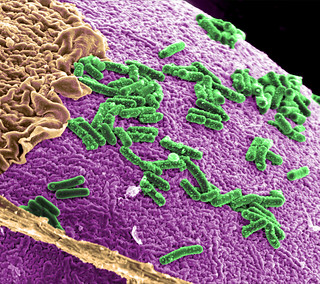If you ever feel lonely, take solace in the fact that at any given time there are thousands of bacteria cells living in your gut, (inside your skin!).
As it turns out, there’s a whole lot of ‘not you‘, living in you.
Admittedly, they don’t make the best company as they tend to be on the quieter side.
They make up for it by being fantastic listeners.
https://www.flickr.com/photos/pnnl/8146322408
Courtesy of Pacific Northwest National Laboratory.
They also serve as an essential part of our bodily systems, referred to by Valeria D’argenio in her essay The role of the gut microbiome in the healthy adult status, as “our forgotten organ”.
One great measure of how important something is is how wrong things go when the original thing isn’t doing it’s thing properly. Put eloquently by D’argenio “Quantitative and qualitative alterations in the composition of the gut microbiome could lead to pathological dysbiosis, and have been related to an increasing number of intestinal and extra-intestinal diseases”. The Human Gut micro biome is important to maintaining good health. Interestingly though (and somewhat alarmingly), the human gut micro biome has historically been fairly hard to study. as D’argenio puts it “microbial studies were based on the direct cultivation and isolation of microbes” and then later states that “it is estimated that up to 99% of microbes are currently uncultivable”. These facts make it clear that with old methods, the human gut micro biome has been extremely hard to study effectively. Which is crazy because the human gut micro biome is so important. Metagenomics are changing the game.
Recently new strategies known as Metagenomics have been discovered that avoid the inefficient and ineffective cultivation step. Using the “Shotgun Sequencing” strategy, scientists have become able to sequence the DNA directly and have gained the ability to sequence entire microbial communities. This new method represents a significant step in understanding the human but microbiome but it is not perfect. D’argenio references limitations to current DNA sequence databases and difficulty in deciphering DNA function as obstacles that have yet to be totally overcome.
16s rRNA Sequencing is another form of metagenomics helping to illuminate the mysteries of the human gut micro biome. All bacteria contain the 16s rRNA. The 16s rRNA Sequencing gene takes advantage of this fact by identifying this gene in a large sequence and gaining a clearer view of which bacteria species are present in certain environments. This strategy is cost effective and can be performed rapidly but offers no insight as to bacterial function.
Metatranscriptomics succeeds where 16s rRNA Sequencing fails. In the words of D’argenio “Metatranscriptomics serves to analyze the entire transcriptome of an environmental site to obtain a comprehensive view of gene expression profiles and functional data”. Put simply metatranscriptomics, a form of metagenomics, is able to attain data on gene expression, not just sequencing. This is a major step in the analysis of the human gut microbiome as with this advancement we move closer to finding out exactly which aspects of the micro biome lead to which effects on the human body.
I’m personally excited about advancements in this field, because it seems like the human gut micro biome is important to our health and well being. The more we know about it the more we’ll be able to treat our bodies healthily. Which would be great!



Leave a Reply